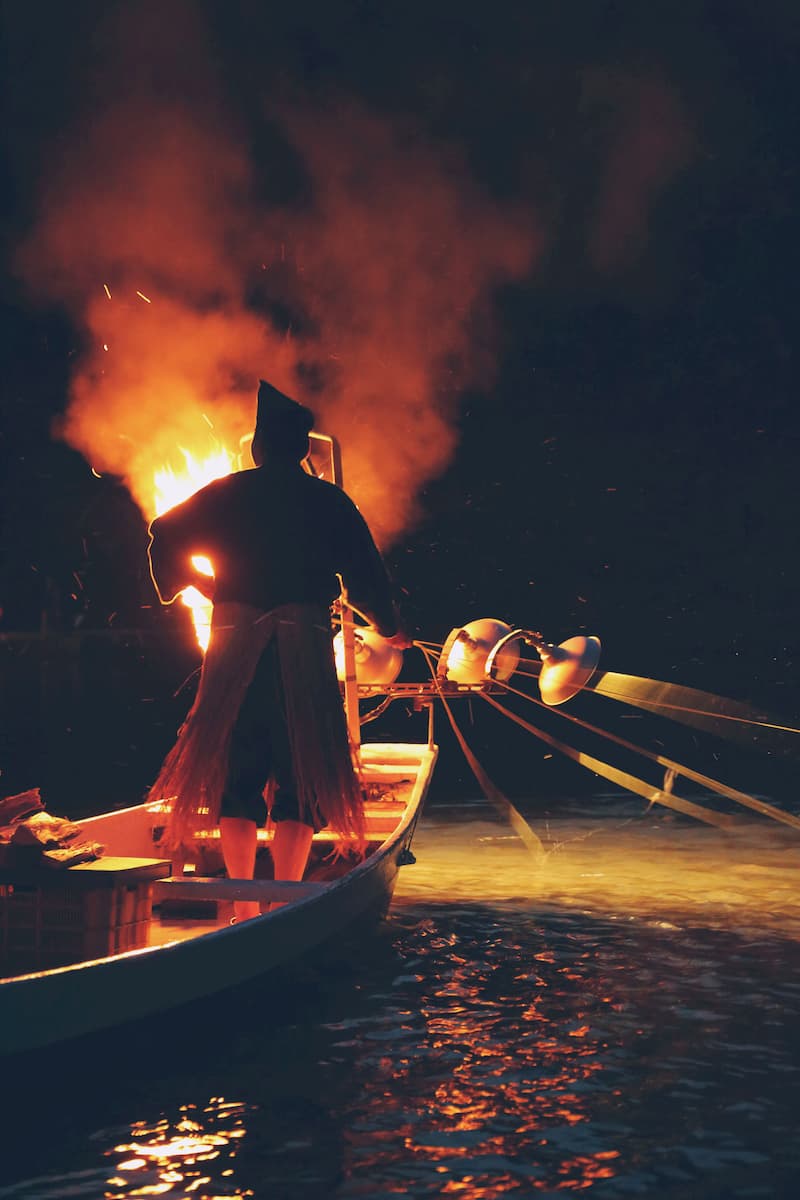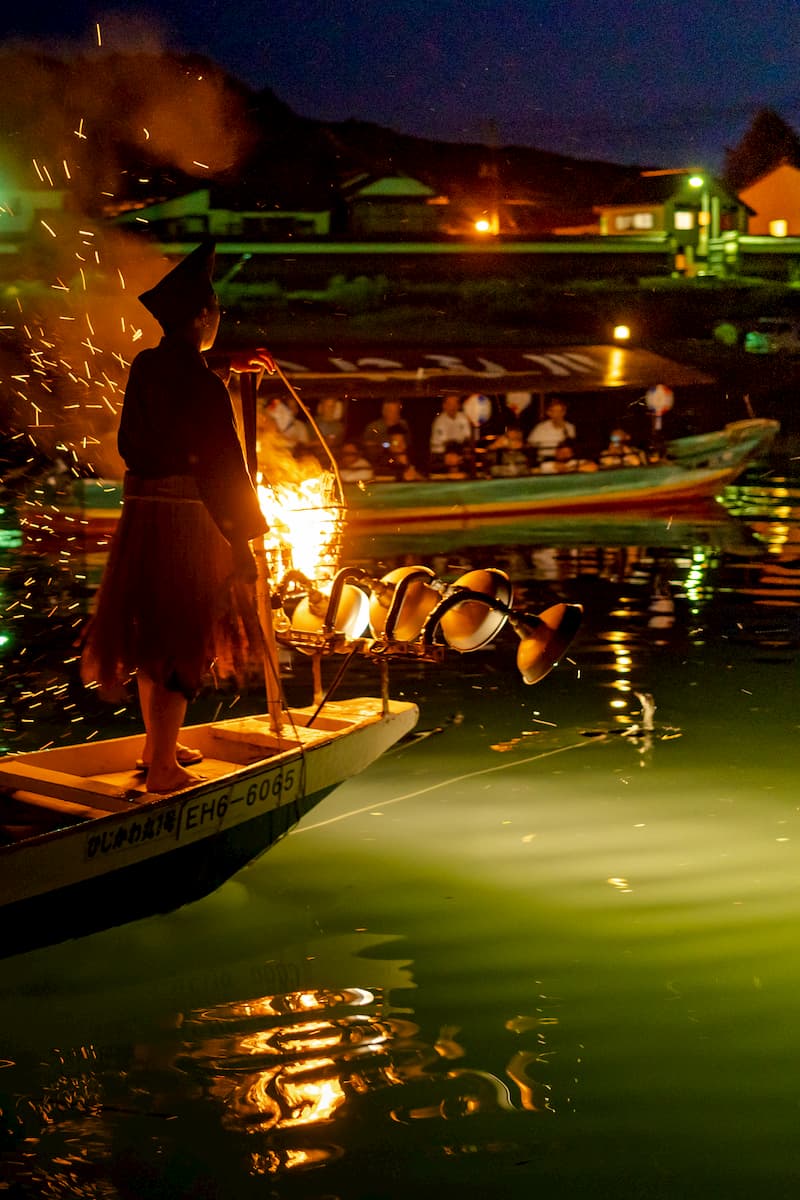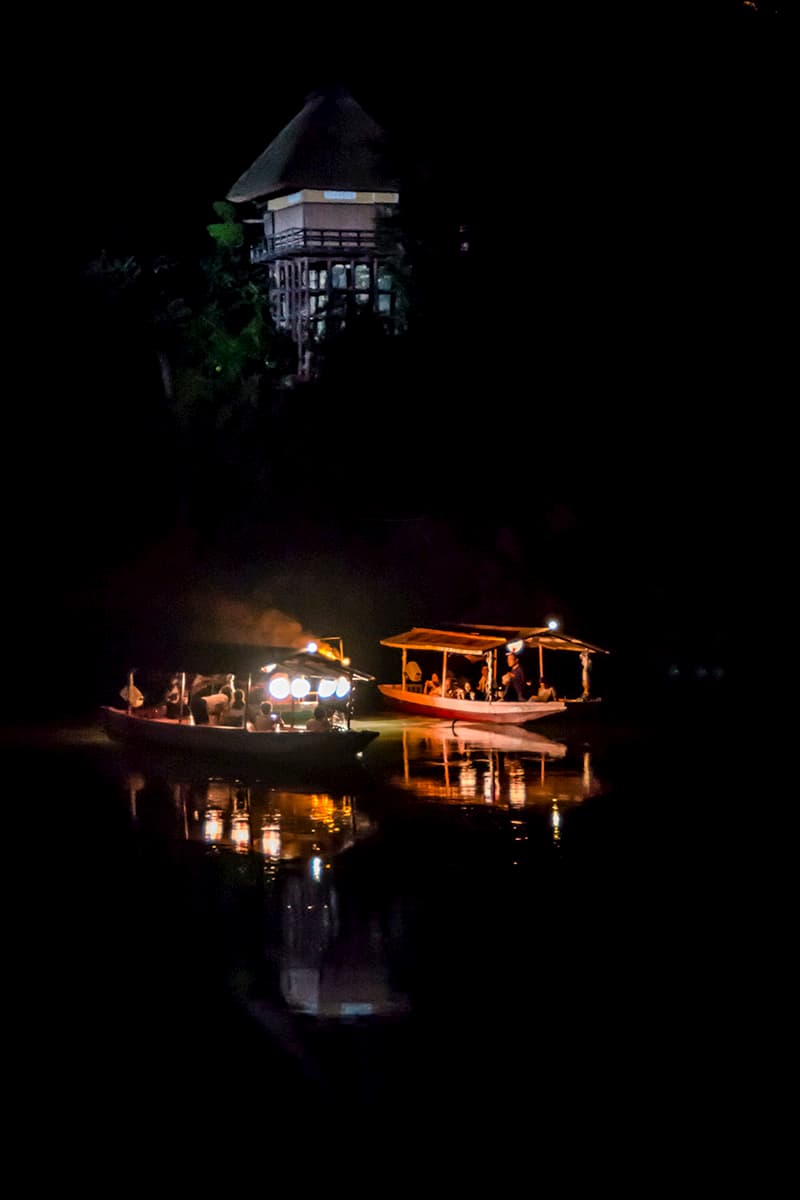- HOME
- Special Features
- On Summer Evenings, Experience the Magic of Ozu’s Unique Cormorant Fishing Event
- Castle Town Stories
- 2024.03.21
On Summer Evenings, Experience the Magic of Ozu’s Unique Cormorant Fishing Event
Ozu Ukai, one of Japan’s top three cormorant fishing traditions
Ozu’s ukai stands alongside the famed practices of Nagara River in Gifu Prefecture and Mikuma River in Oita Prefecture. Ukai fishing boasts a long history, with mentions in ancient texts like the Kojiki and Nihon Shoki (7th-8th centuries CE). Artifacts reminiscent of cormorant fishing from the Kofun period suggest that this tradition dates back over 1,300 years. Today, cormorant fishing primarily serves as a tourist attraction, but in the past, it was an essential part of life for communities living along Japan’s rivers. The technique’s strength lies in the cormorant’s ability to swallow fish whole without damaging them, preserving their quality.
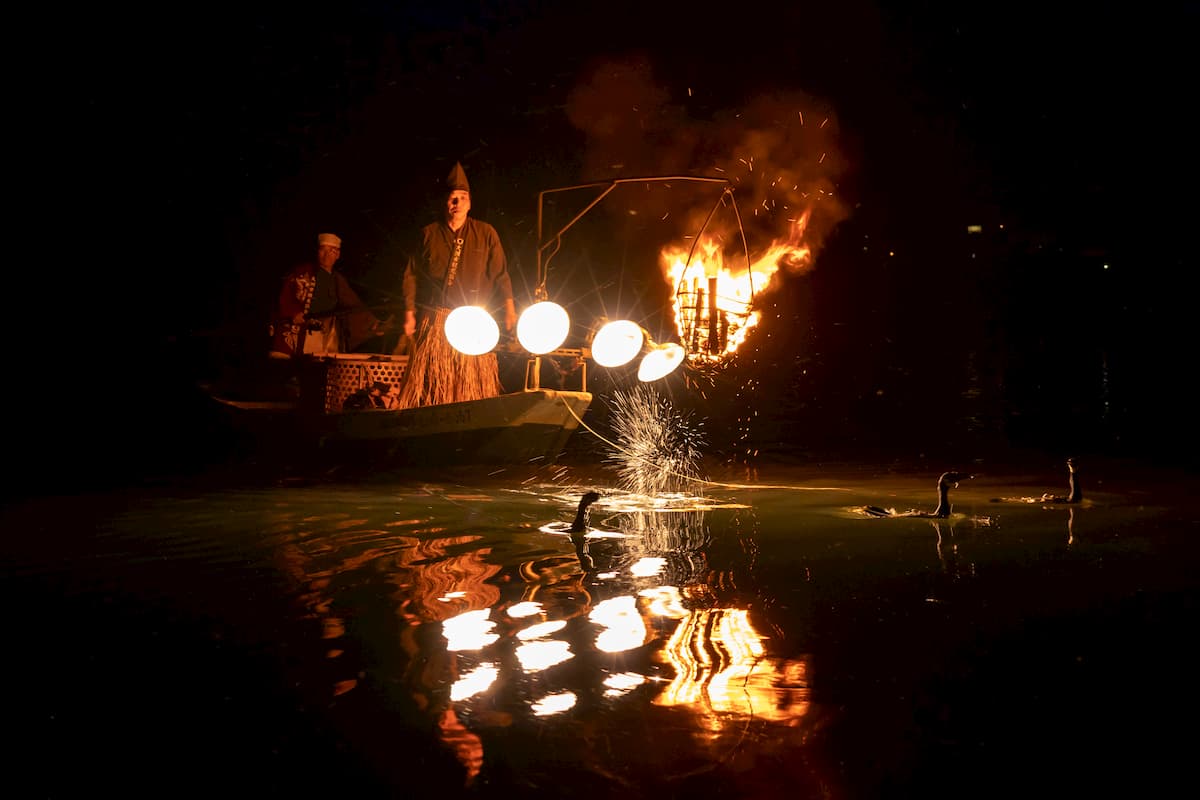
Fish caught via Ukai, such as ayu (sweetfish), were highly prized as offerings to emperors, aristocrats, and feudal lords. This method also capitalizes on the cormorant’s natural disposition to bond with humans. Notably, the birds used in the ukai, called umi-u (a sea species), are distinct from the wild kawa-u (river cormorants) often seen by riversides. Ukai cormorants live in specialized shelters known as toya when not fishing.
Ozu’s Unique “Awase Ukai”
Ozu is the birthplace of “Awase Ukai,” a rare fishing technique where the cormorant master’s boat, lit by torchlight, glides down the river alongside a passenger houseboat. This approach offers an up-close view of cormorants splashing through the water as they hunt fish. The cormorant masters, dressed in traditional eboshi hats and straw skirts, display breathtaking skill in handling their ropes.
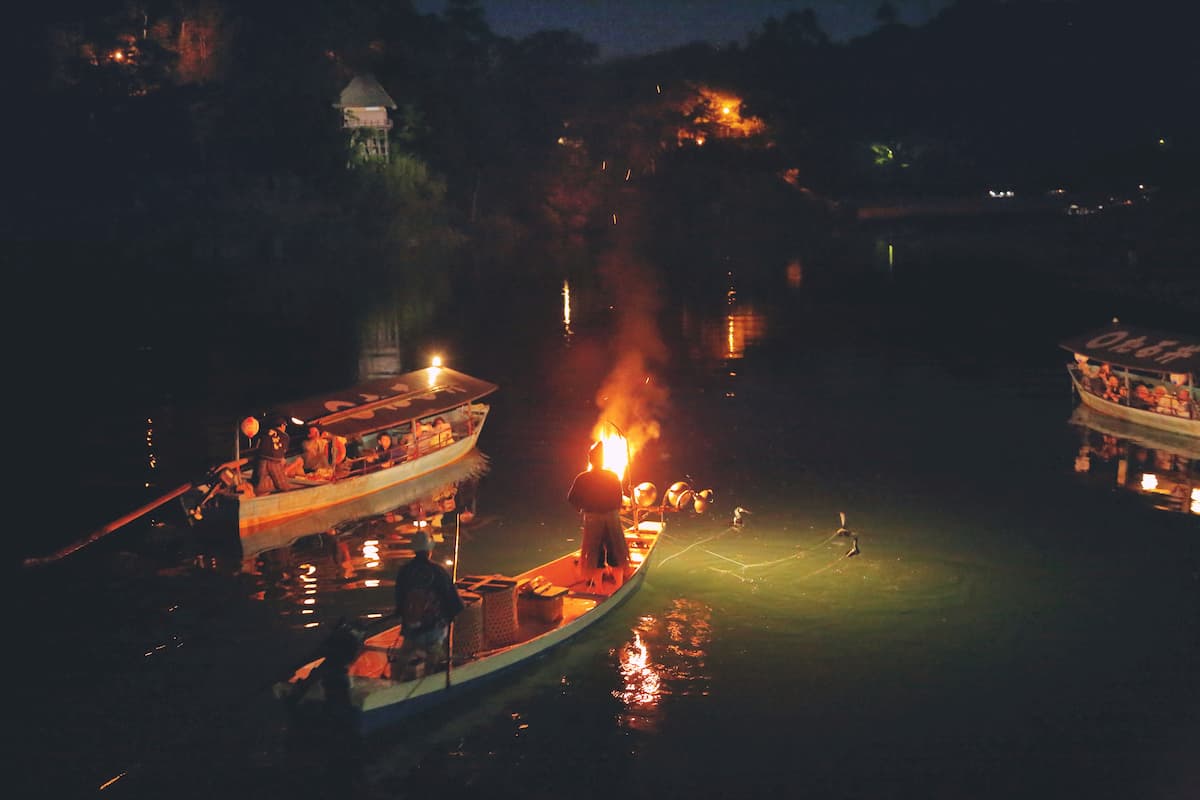
Unlike other Ukai experiences, which typically feature multiple cormorant boats navigating the river while spectators watch from houseboats moored along the shore, Ozu’s Hiji River presents a unique challenge. Its narrow width makes such setups impractical. To overcome this, the cormorant masters and boatmen of the past devised the ingenious Awase Ukai. Both the cormorant and passenger boats were specially designed to be smaller, perfectly suited for the Hiji River. Today, 15 houseboats participate in this tradition, a testament to the ingenuity born from the river’s limitations. Discover the timeless spectacle of Awase Ukai, a tradition shaped by Ozu’s resourcefulness and its connection to the Hiji River.
The Charm of Ozu’s “Awase Ukai”
The hallmark of Ozu’s Awase Ukai is the extraordinary closeness between the cormorant boats and the passenger houseboats. This proximity, so near that it feels like you could reach out and touch the cormorants, is the highlight of the experience. Passengers often find themselves leaning over the railings, captivated by the scene unfolding right before them.
Nighttime, when the flow of the river looks quieter. Furthermore, the Hiji River spreads in a curve-like shape along its course, strengthening the uniqueness of this place. At Ozu ukai, boats are stirred by hand to prevent the sweet fish from escaping. Without the experience of boatmen, who know all details about Hiji River, navigating Ozu ukai would be not feasible. In addition, cormorant fishermen are required to be extremely skilled at handling their ropes and coordinate all the action.
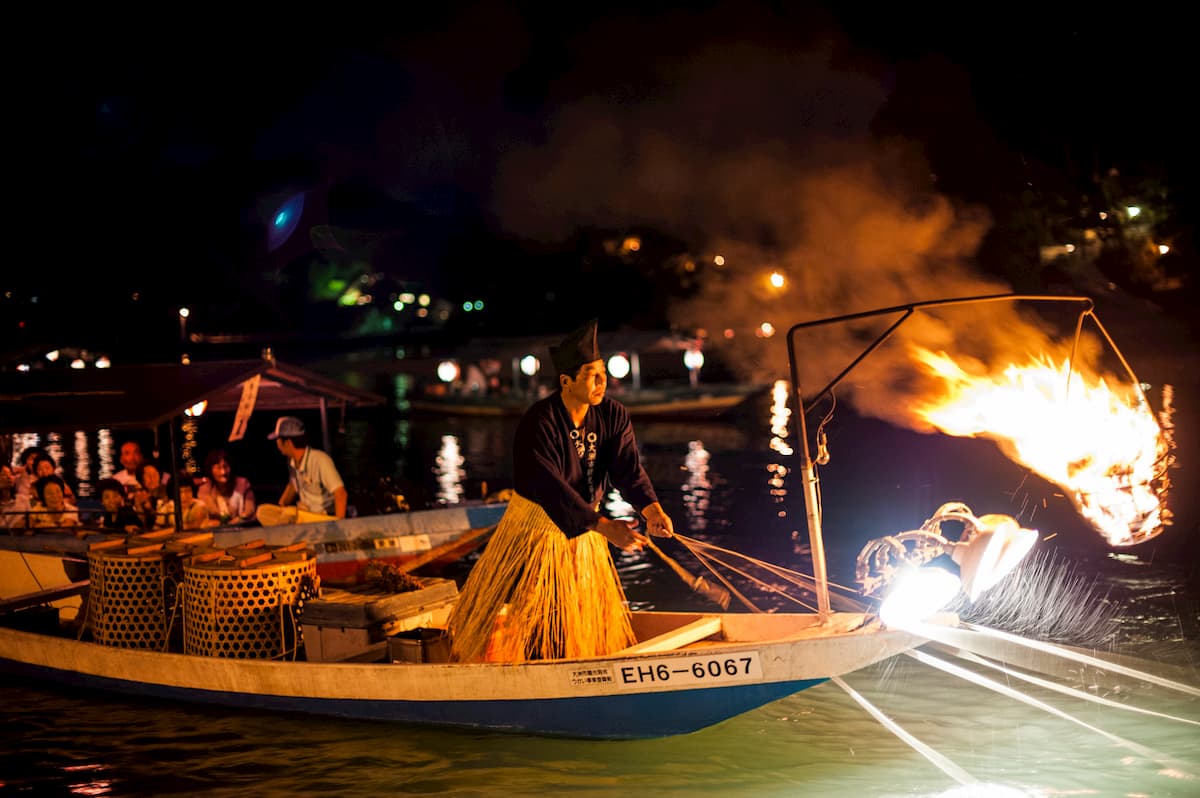
The hallmark of Ozu’s Awase Ukai is the extraordinary closeness between the cormorant boats and the passenger houseboats. This proximity, so near that it feels like you could reach out and touch the cormorants, is the highlight of the experience. Passengers often find themselves leaning over the railings, captivated by the scene unfolding right before them. However, this intimate setup demands incredible precision and seamless coordination. The cormorant masters, the boatmen of both the cormorant and passenger boats, and even the cormorants themselves must work in perfect harmony. The collaboration, built on mutual understanding and constant “dialogue,” is what makes the Awase Ukai possible.
Despite the serene appearance of the Hiji River, its currents are swift. Add the challenges of navigating at night and the river’s winding, elbow-like curves, and the skill required becomes clear. To ensure the fish don’t escape, all movement is controlled manually by the boatmen. Only their deep knowledge of the Hiji River allows them to guide the boats with just the right speed and distance to avoid collisions while maintaining a breathtakingly close formation.
The cormorant masters must also display exceptional skill, deftly maneuvering their ropes to ensure that all passengers, no matter where they’re seated, get an unobstructed view of the cormorants at work. The cormorants, too, play a crucial role, responding to the master’s commands and moving fluidly in all directions.
Interestingly, the harmony among the cormorants themselves is just as important. Each Awase Ukai outing involves five cormorants, but if the birds do not get along, their movements become disjointed. To prevent this, the cormorant masters treat each bird as a partner, learning their personalities and fostering compatibility. This relationship is nurtured daily, with masters spending time caring for the birds, calling them by name, and maintaining a strong bond even during their off-duty periods. The allure of Awase Ukai isn’t just the proximity to the cormorants. Passengers are also treated to the warmth and hospitality of the cormorant masters and boatmen, who are well-versed in creating a memorable experience. This closeness and interaction with the crew are unique to Ozu’s Awase Ukai, offering visitors a chance to feel the “dialogue” that defines this tradition.
A Feast for the Senses
While enjoying the spectacle, passengers can savor local delicacies and sake aboard the houseboats. As you drift along the moonlit Hiji River, you can admire iconic sights like Ozu Castle and Garyu Sanso illuminated against the night sky. This quintessential summer tradition invites you to immerse yourself in the essence of Ozu, and many visitors find themselves returning year after year to relive the experience. Discover the magic of Awase Ukai and feel the heartbeat of Ozu’s timeless waterscape.
Stay up to date on event details and featured offerings via the official Instagram page.Back to Articles



